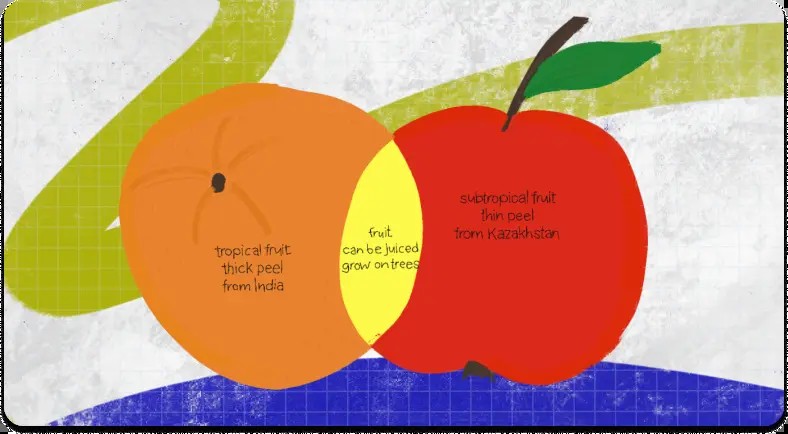Compare and contrast essays analyze the similarities and differences between two or more subjects. These subjects typically belong to the same category but possess distinct characteristics. This essay type is common in academic settings, requiring students to demonstrate analytical and comparative skills. A strong compare and contrast essay presents a clear central point, highlighting insights gained from the analysis. This guide focuses on outlining techniques to effectively structure such essays.
Brainstorming for Your Compare and Contrast Essay
Before outlining, brainstorm similarities and differences between your chosen subjects. List key characteristics, then delve deeper, considering various perspectives. Visual learners can use a Venn diagram, placing shared traits in the overlapping section and unique traits in the non-overlapping sections. Alternatively, create a two-column list, comparing the same characteristic for each subject side-by-side. This organized approach facilitates argument development. Remember, the goal isn’t simply listing similarities and differences but analyzing them to draw meaningful conclusions and connections.
Two Effective Outlining Methods: Point-by-Point and Block Method
Two primary outlining methods exist: point-by-point and block. The point-by-point method discusses each similarity and difference concurrently, directly comparing aspects of both subjects. The block method presents all information about one subject first, followed by all information about the second subject. Each method has advantages. The block method is simpler, presenting information without explicit comparison. The point-by-point method demands more analysis, making comparisons clearer for the reader.
Detailed Structure of Each Outline Method
Point-by-Point Outline Structure
Introduction: Introduce the topic, define your theme, and present a thesis statement encompassing the essay’s scope.
Body Paragraphs: Each paragraph focuses on a specific point of comparison or contrast. Start with a topic sentence, then discuss the first subject, followed by the second subject, highlighting similarities or differences related to that point. Use strong evidence and examples. For instance:
- Body Paragraph 1: Lifestyle – Compare how each subject affects lifestyle.
- Body Paragraph 2: Finances – Compare the financial implications of each subject.
- Body Paragraph 3: Suitability for City Living – Compare how each subject fits into a city environment.
Conclusion: Summarize key findings and reiterate the thesis statement.
Block Outline Structure
Introduction: Similar to the point-by-point method, introduce the topic, theme, and thesis statement.
Body Paragraphs: Each paragraph focuses on one subject. Discuss all chosen aspects (lifestyle, finances, city living, etc.) for the first subject in the first body paragraph. Then, dedicate the second body paragraph to discussing all aspects of the second subject.
Body paragraph 3: Evaluate the comparisons and explain their significance, providing real-world applications.
Conclusion: Summarize key findings and restate the thesis.
Essential Tips for Writing a Compare and Contrast Essay
- Use Transition Words: Employ transition words like “similarly,” “likewise,” “in contrast,” “on the other hand,” to connect ideas and guide the reader.
- Provide Evidence: Support arguments with credible evidence from personal experiences, academic sources, or reputable publications.
- Clarify Concepts: Explain unfamiliar terms and provide context for the reader.
- Proofread Carefully: Eliminate grammatical errors and punctuation mistakes.
- Seek Feedback: Have someone review your essay for clarity and coherence.
Remember, a successful compare and contrast essay engages the reader with a compelling analysis and well-supported arguments. Choose a topic that interests you and utilize these outlining techniques to create a structured and insightful essay.
